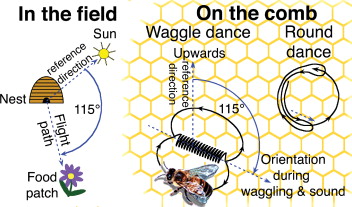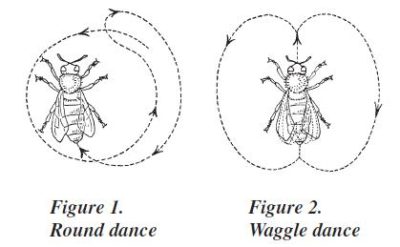The Waggle Dance
Like any animal, and as a social insect, honeybees have their own unique set of behaviors. One of their most fascinating behaviors is dancing, which has been termed as waggle dancing. In the tropical zones there is often a dearth period most commonly caused by drought, heat, or too much rain; and during these periods a honeybee colony must abscond the area where the dearth is happening in order to survive. During those periods the brood in the colony will no longer be reared and scout bees will have performed a dance on top of the comb that communicates to the other bee adults as to where a new foraging site was available. Once the dance is complete, and the direction and the new area for forage indicated, then the colony will abscond the nest together and head towards the new nest site. If you are interested in further detail and a video that demonstrates the bee dance please refer to this video made by the Georgia Tech College of Computing.

In the early 1920s, Karl von Frisch (a famous Austrian ethologist and zoologist who made several animal behavior discoveries) also found that there was a systematic pattern to the waggle dances that forager bees utilized to communicate where a good nectar site could be found. The bees would perform a repeated movement or dance on the vertical portion of the comb while the other foragers would follow attentively and learn where to find the source as as well as would learn the scent of the nectar that was being carried by the dancing bee. There are patterns of waggle dance a returning forager bee can perform to communicate to other bees. When a circle shape is made that indicates that food can be found 50-100 meters away. The dance will consist of repeating the circle and constantly reversing the direction.

If the food source is even further away then a figure of eight will be made while the worker bee continues to make a ‘waggle’ movement with her abdomen. The distance will be indicated by the tempo of the dance. Furthermore, direction is communicated by moving on a vertical plane to indicate a straight run and heading towards the sun is indicated by upwards movement on the comb. When there is cloudy weather, the worker bee can still perform her dance and communicate the direction of the food because she can perceive polarized light. In other words, these insects are able give a set of directions, in the midst of complex environmental factors, and all with the use of bodily communication. It is an incredible system formed through millions of years of evolution.




